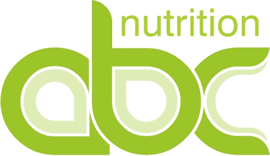The Modified Atkins Diet is a more palatable less restrictive form of the Traditional ketogenic (very low carbohydrate high fat) diet.
What is the Modified Atkins Diet?
The Modified Atkins diet was established in 2003 at John Hopkins Hospital, Baltimore, as an attempt to create a more palatable less restrictive form of the Traditional Ketogenic (low carbohydrate) Diet. The first published trial was in 2006 showing over 50% of children on the diet have a greater than 50% reduction in seizures. There have now been over 22 trials published showing similar results.
How is the Modified Atkins Diet different from the Traditional Ketogenic Diet?
The Modified Atkins Diet is a lower ratio ketogenic diet that induces ketosis. Generally it follows a 1:1 ratio of fat: carbohydrate + protein however, there can be variations up to a ratio of 2:1, The Traditional Ketogenic Diet is usually a 4:1 or 3:1 ratio. There are no calorie or fluid restrictions, no weighing of food, no hospital admission or fasting period and education can be provided in an outpatient setting. The Modified Atkins Diet allows families more independence and the ability to share food at family meals.
What is the difference between the Atkins Diet and Modified Atkins Diet for Seizures?
The diets are very similar. Both are low carbohydrate, high fat diets which can be used long term. Weight loss can occur on either diet and they both induce urinary ketosis. However, the Modified Atkins differs in that high fat foods are strongly encouraged (rather than allowed), carbohydrate intake is more restrictive (around 10-15gm carbohydrate per day) and weight loss in not the primary goal.
What do I need to do before starting the diet?
It is ideal to see a neurologist prior to a visit to the Dietitian, so they can ensure there are no contraindications for beginning the diet. Baseline blood work will need to be completed and food intake recorded for three days. It can take a few days to get organised before starting the diet and it is recommended to read and surf the internet to get information, ideas and recipes. It can also help to write down any questions you may have and bring these along with you to your consultation with us. Some helpful sites include:
www.atkins.com
www.atkinsforseizures
www.epilepsy.com
www.hopkinsneuro.org/epilepsy
www.myketocal.com
How long do I stay on the diet?
As long as needed. The diet is usually trialled for an initial 3 month period with results can be seen between 2 weeks and a few months depending on seizure frequency. If the diet is effective people usually see results by having less frequent seizures or less severity of seizures. If this is the case, people usually remain on the Modified Atkins Diet for up to two years.
Are there side effects of the Modified Atkins Diet?
It is thought the side effects are less common than the Classic Ketogenic Diet as it is less restrictive. Weight loss can occur which may be beneficial for some people. Blood lipids may become elevated however; these are usually corrected when coming off the diet. Because there is a small risk of developing kidney stones, it is important to be under the supervision of a healthcare professional.
What are the keys to successful implementation of the diet?
It is ideal if the individual and the family are fully committed to the diet and where possible share the same foods at meal times. It is important to be well organised, plan and prepare meals ahead of time. Try new recipes and be creative with the menu. It is a lifestyle change and takes time to adjust so keep positive and look at the big picture. There are also some great resources and support groups available to help including:
www.matthewsfriends.org
www.charliefoundation.org











